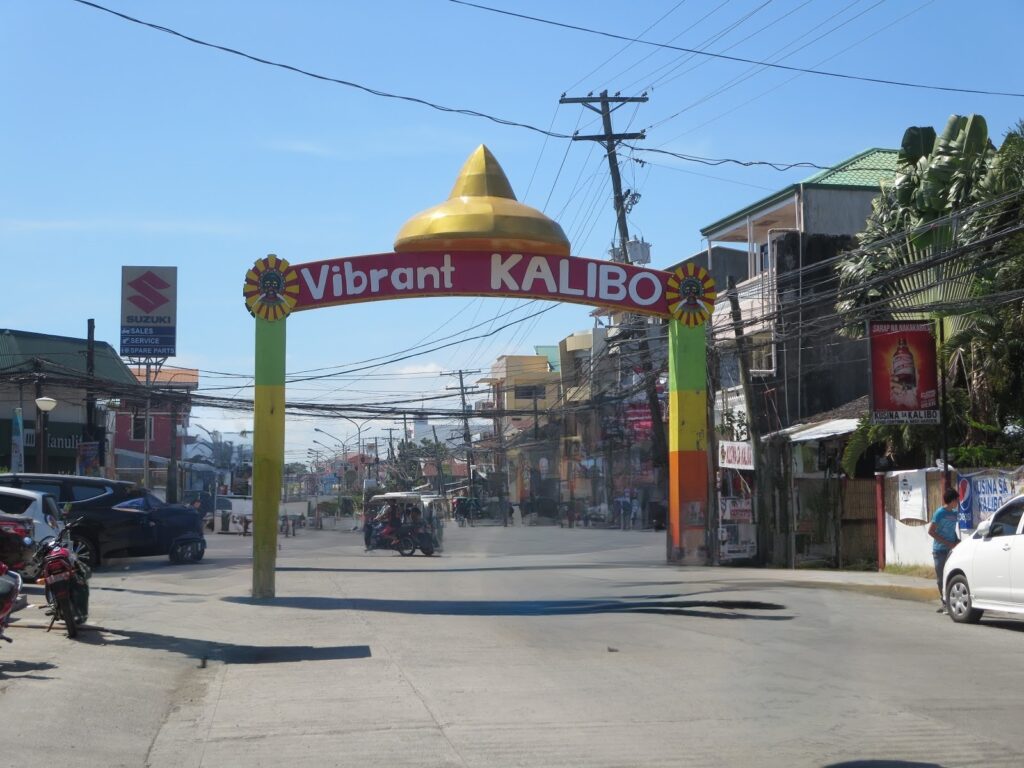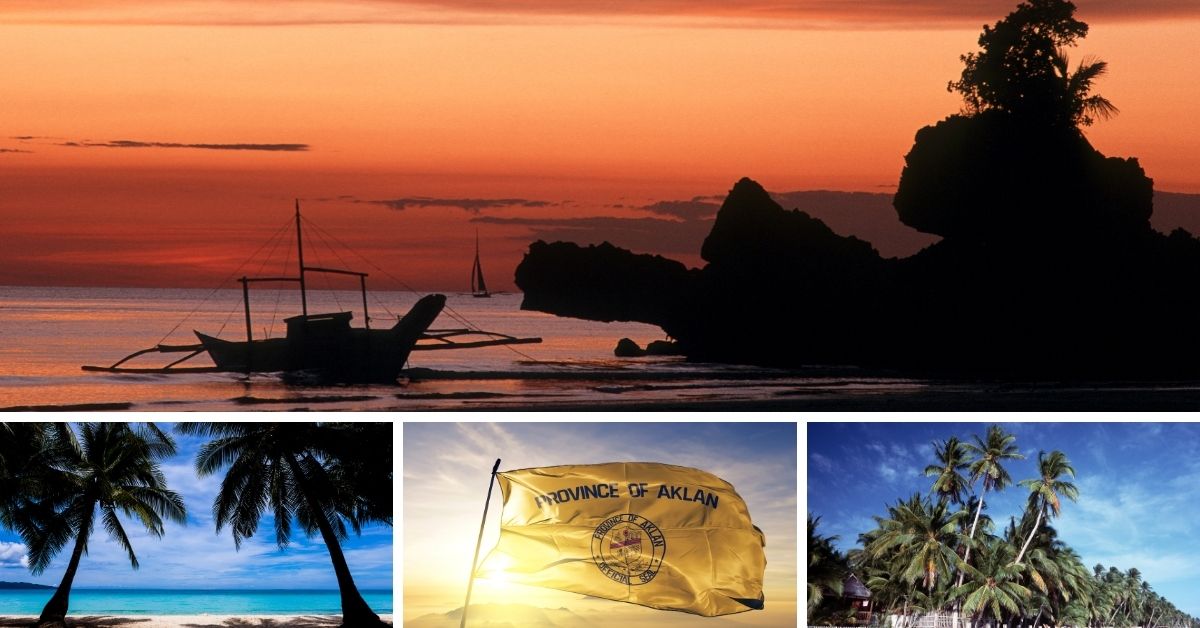Kalibo, the vibrant capital of Aklan Province in the Philippines, offers a colorful mosaic of experiences sure to captivate any traveler’s heart. Nestled at the northwestern tip of Panay Island, this town is more than just a gateway to the famed white beaches of Boracay. It’s a cultural cauldron where history, festivities, and nature converge. As we wander through the streets of Kalibo, we’re greeted by the warm smiles of locals, a testament to the town’s hospitable charm. Join me and discover what to do in Kalibo!

Each year, the rhythm of drums and the visual spectacle of the Ati-Atihan Festival set Kalibo ablaze with energy. Here, tourists and residents alike find themselves immersed in a jubilant celebration that honors the Santo Niño, with streets transforming into stages for dance, music, and indigenous art. Beyond these annual festivities, Kalibo invites us to explore its rich history, evident in every corner of the town. From the sacred grounds of religious sites to the weaves of the hand-loomed piña cloth, Kalibo offers a tapestry of activities that weave together the cultural heritage and the natural beauty of Aklan.
For those who seek solace in nature, Kalibo’s ecological offerings are as lush as they are expansive. The Kalibo Mangrove Ecopark stands as a sanctuary for biodiversity, while the serene flows of the Aklan River remind us of the rhythmic pulse of life that courses through the province. In Kalibo, whether one is navigating the bustling markets, admiring the craftsmanship of local artisans, or savoring the delectable flavors of Aklanese cuisine, the promise of an authentic and enriching experience is ever-present.
Key Takeaways
- Kalibo is a rich cultural hub steeped in history and tradition.
- Annual festivals and local weavings showcase Kalibo’s vibrant community spirit.
- The town’s natural landscapes offer diverse and tranquil eco-tourism experiences.
Historical Landmarks

When we explore Kalibo, we’re not just walking through a vibrant town; we’re stepping into a past rich with history and culture. Let’s uncover two historical landmarks that offer us a glimpse into Aklan’s proud heritage.
Aklan Freedom Shrine
The Aklan Freedom Shrine is a testament to our fight for liberty. It commemorates the Aklanons’ bravery during the revolution against the Spanish government. As we stand before the shrine, we are reminded of the historical significance of the area and the pivotal events that helped shape our nation.
Museo It Akean
Museo It Akean, our local museum, is a treasure trove that houses artifacts which artfully weave the story of Aklan’s past. It’s nestled within the Kalibo Cathedral complex, itself a historical icon standing majestically as a symbol of faith and resilience. Browsing through the exhibits, we uncover artworks, historical documents, and memorabilia that are as enriching as they are enlightening.
Cultural Experiences

When we explore Kalibo, we are welcomed with a vibrant tapestry of cultural experiences that span from lively festivals to delicious Aklanon cuisine and colorful handicraft markets.
Ati-Atihan Festival
What we can’t miss: Held every January, the Ati-Atihan Festival honors the Santo Niño and transforms the streets of Kalibo into a dynamic display of dancing, drumming, and festive costumes. As the highlight of Kalibo’s cultural calendar, this festival blends religious reverence with the euphoria of a street party. Visiting during the Ati-Atihan Festival is a unique chance to immerse ourselves in Aklanon culture.
Local Cuisine
Where to indulge: The culinary scene in Kalibo invites us to savor the tastes of Aklanon cuisine. We find the heart of local flavors at the town’s food court, especially during fiesta periods like Christmas and March. Here’s a taste:
- Binakol: A comforting chicken soup cooked with coconut water
- Inubarang Manok: A tangy dish made with native chicken and lemongrass
Joining a fiesta or simply dining in one of Kalibo’s restaurants gives us a delightful insight into the local palette.
Handicraft Markets
What to take home: Our cultural journey isn’t complete without visiting Kalibo’s handicraft markets, where the creativity of the Aklanon people truly shines. Vibrant hand-woven piña cloths and artisanal crafts are perfect souvenirs to remember our trip by. We stroll through the markets, admiring the handiwork and perhaps even picking up a few pieces to bring a touch of Kalibo back home with us.
Nature and Eco-Tourism

In Kalibo, nature and eco-tourism are not just activities; they are experiences that reflect our dedication to environmental conservation and community involvement. Our visits to these natural sites support local livelihoods and conservations efforts.
Bakhawan Eco-Park
Bakhawan Eco-Park stands as a testament to our community-driven success in environmental stewardship. Through the combined efforts of the Kalibo Save the Mangroves Association and local residents, what started as a mangrove reforestation project has flourished into a 220-hectare eco-park, one of the largest mangrove reforestation projects in the Philippines. Walking along the wooden boardwalk, we’re immersed in the dense beauty of mangrove forests, a crucial ecosystem that protects our coastlines.
- Wildlife: As we meander, the park’s vibrant ecosystem becomes apparent, home to species like snake and various birds.
- Birdwatching: There’s also the chance for us to spot fluttering kingfishers among other feathered inhabitants, making it an ideal spot for birdwatching enthusiasts.
- Tamilok: For the more adventurous, there’s tamilok, a local delicacy that’s sure to intrigue your palate.
Kalibo Mangrove Ecosystem
Our pride in the Kalibo Mangrove Ecosystem stretches beyond its natural beauty; it embodies our commitment to nature’s resurgence through revegetation efforts. The mangrove wetlands are more than a protective barrier for our coastlines; they are biodiverse habitats that support both marine and terrestrial species.
- Kayaking: Glide through the serene waterways. Kayaking here allows us to appreciate the tranquility and importance of the mangroves up close.
- Learning Experience: Every visit educates us about the vital role these habitats play in our ecology, with informative signs and knowledgeable guides.
Our journeys through these eco-tourism hotspots connect us directly with the environment and encourage us to be active participants in its preservation.
Religious Sites

When visiting Kalibo, we’re greeted with a rich tapestry of faith and devotion, embodied by its revered religious sites. Let’s explore these sanctuaries of prayer, tradition, and culture together.
Kalibo Cathedral
The Kalibo Cathedral, also known as the Saint John the Baptist Cathedral, stands as a spiritual beacon to Catholics in the region. Here, our hearts are drawn to the venerated image of the Santo Niño. We join pilgrims and penitent sisters in their spiritual journeys, often culminating in vibrant festivals that celebrate our faith and community spirits.
- Location: Pastrana St., Kalibo, Aklan
- Mass Schedule: Daily; times may vary for feasts
- Key Events:
- Aklan’s Ati-Atihan Festival
- Feast of Santo Niño: hearty prayer and joyous dancing
Monastery of Our Lady of Fatima
Our search for tranquility brings us to the tranquility of the Monastery of Our Lady of Fatima. We find solace in meditation amid its serene surroundings. Here, the essence of reflection and connection to the divine envelops us, offering a retreat from the exuberance of festival-filled streets of Kalibo.
- Activities: Quiet prayer, contemplative walks
- Spiritual Retreats: Opportunities for immersive meditation sessions
As we embrace the solemnity of these religious sites, our shared experiences in Kalibo bind us, echoing the harmonious blend of cultural and spiritual inheritance.
Travel and Accommodations

When we arrive in Kalibo, the gateway to some of the most beautiful islands in the Philippines, it’s essential that we make the most of our stay starting with a smooth arrival at Kalibo International Airport. Then, finding our way through local transfers to our final destination is paramount. Selecting the right place to stay with reliable accommodation ratings will ensure our vacation is comfortable and memorable.
Kalibo International Airport
Kalibo International Airport is our first touchpoint in the region, offering flights that connect us domestically and to several international destinations. When we land, the recent expansions in facilities mean we can expect a better quality of services and a more efficient immigration process. For our onward journey, especially during peak vacation season, it’s wise to have our transfers pre-arranged to avoid the rush.
Local Transfers
For local transfers, we have a range of options. The most common are vans and buses that can take us to Caticlan airport or directly to the ferry for Boracay. It’s best to view recent reviews on TripAdvisor or similar sites to gauge the quality and consistency of these services. We can find these ratings help us to decide on a transfer that balances cost and comfort.
- Vans: Offer direct routes; expect to book on arrival or online.
- Buses: Generally cheaper, but may have longer journey times.
Accommodation Ratings
Now, let’s talk about where to stay. Whether booking hotels or more unique accommodations, it’s essential we look at both the quantity and recency of the reviews. Popular platforms like TripAdvisor offer a comprehensive look at ratings, giving us insights into what to expect regarding service quality and value.
- Highly-rated stays: Look for consistent praise across many reviews.
- Recency of reviews: Ensure the feedback is from within the last few months for the most accurate picture.
Remember to check the variety of accommodation offerings early and secure our bookings, especially if we’re traveling during peak seasons. The earlier we book, the better the selection we’ll have.
Frequently Asked Questions

We’ve compiled some of the most common queries travelers have when visiting Kalibo to help make your trip as smooth as possible.
What are the top attractions to visit in Kalibo?
In Kalibo, you won’t want to miss the vibrant Kalibo Ati-Atihan Festival, which is celebrated every January. Also, exploring the peaceful Bakhawan Eco-Park, a mangrove forest, is a must for nature enthusiasts.
Where can I find the best local cuisine in Kalibo?
For the best local flavors, we recommend trying the authentic Aklanon dishes at Saylo Cuisine. Indulge in their seafood dishes that offer a true taste of our coastal culinary delights.
How do I get from Kalibo to Boracay and what should I know before making the trip?
The easiest way to get to Boracay from Kalibo is by taking a bus or van to Caticlan Jetty Port, followed by a short boat ride to the island. Bear in mind to check the latest boat schedules and environmental fees prior to your journey.
What unique souvenirs can I bring home from Kalibo?
Our handwoven piña cloth is a sought-after souvenir, ideal for those looking to bring home a piece of Kalibo’s fine craftsmanship. Visit the local markets for these exquisite textiles and look out for colorful Ati-Atihan masks as well.
What are some cultural experiences I shouldn’t miss in Aklan?
Immerse yourself in our heritage by participating in a panyahan weaving workshop, where you’ll learn about the traditional art of creating mats from pandan leaves. Also, witnessing or taking part in the Ati-Atihan Festival offers an unforgettable cultural experience.
Can you suggest an ideal itinerary for a day in Kalibo?
Start your day with a leisurely stroll through Pastrana Park, followed by a visit to the Aklan Freedom Shrine. Don’t miss a peaceful trek through the Bakhawan Eco-Park, and end your day with a dinner featuring delightful Aklan specialties at a local restaurant.


1 thought on “What to Do in Kalibo: Your Guide to the Best Activities and Attractions”
Comments are closed.